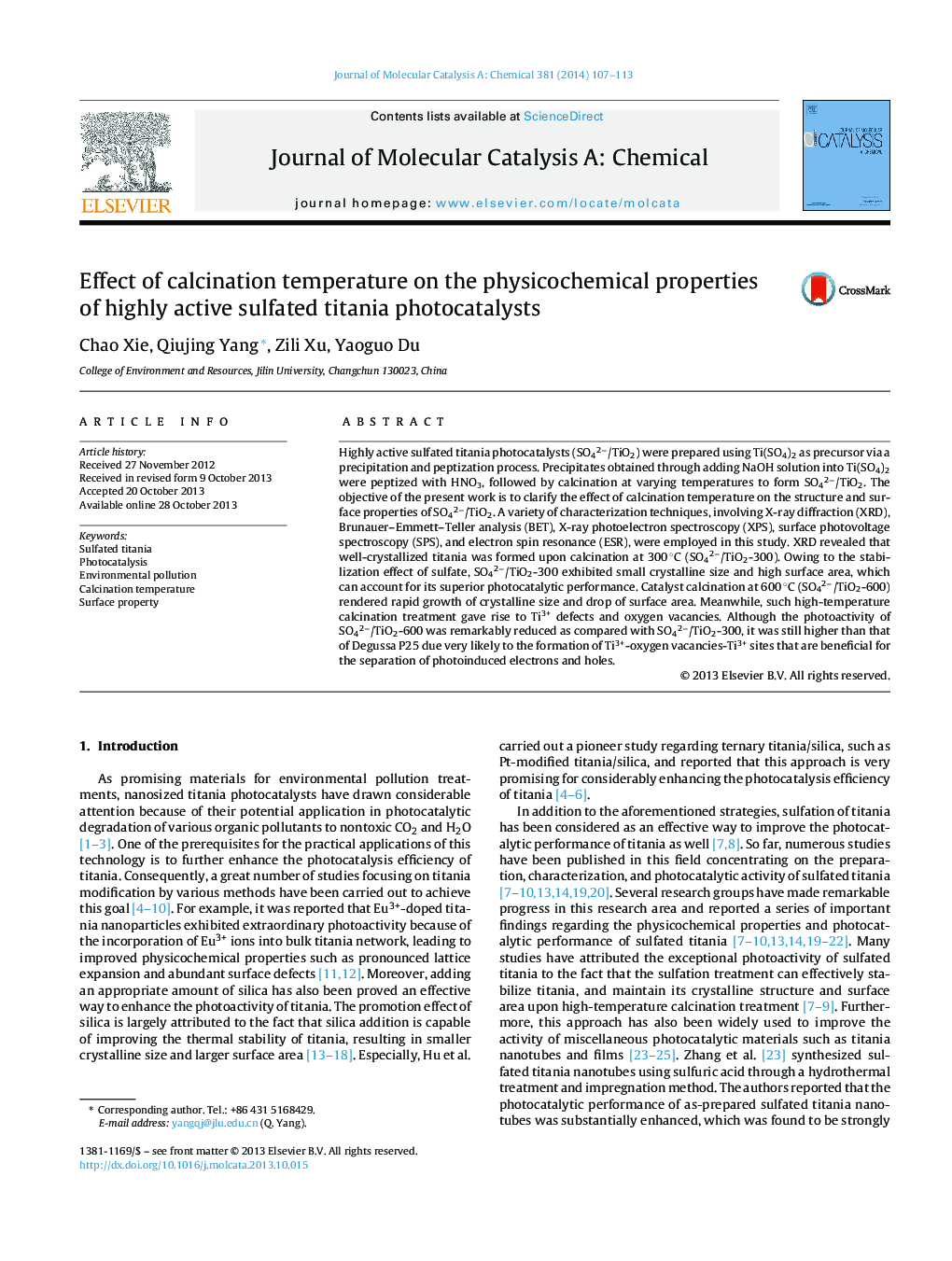| Article ID | Journal | Published Year | Pages | File Type |
|---|---|---|---|---|
| 65474 | Journal of Molecular Catalysis A: Chemical | 2014 | 7 Pages |
•Highly active sulfated titania was prepared using Ti(SO4)2 as precursor.•Calcination is critical for tuning the photoactivity of sulfated titania.•The superior activity of sulfated titania was explained.
Highly active sulfated titania photocatalysts (SO42−/TiO2) were prepared using Ti(SO4)2 as precursor via a precipitation and peptization process. Precipitates obtained through adding NaOH solution into Ti(SO4)2 were peptized with HNO3, followed by calcination at varying temperatures to form SO42−/TiO2. The objective of the present work is to clarify the effect of calcination temperature on the structure and surface properties of SO42−/TiO2. A variety of characterization techniques, involving X-ray diffraction (XRD), Brunauer–Emmett–Teller analysis (BET), X-ray photoelectron spectroscopy (XPS), surface photovoltage spectroscopy (SPS), and electron spin resonance (ESR), were employed in this study. XRD revealed that well-crystallized titania was formed upon calcination at 300 °C (SO42−/TiO2-300). Owing to the stabilization effect of sulfate, SO42−/TiO2-300 exhibited small crystalline size and high surface area, which can account for its superior photocatalytic performance. Catalyst calcination at 600 °C (SO42−/TiO2-600) rendered rapid growth of crystalline size and drop of surface area. Meanwhile, such high-temperature calcination treatment gave rise to Ti3+ defects and oxygen vacancies. Although the photoactivity of SO42−/TiO2-600 was remarkably reduced as compared with SO42−/TiO2-300, it was still higher than that of Degussa P25 due very likely to the formation of Ti3+-oxygen vacancies-Ti3+ sites that are beneficial for the separation of photoinduced electrons and holes.
Graphical abstractFigure optionsDownload full-size imageDownload high-quality image (107 K)Download as PowerPoint slide
